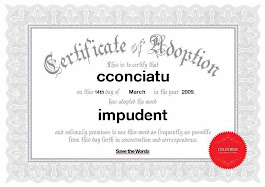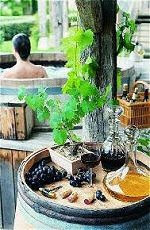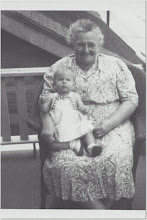My dear bloggyfriend, Leilani, of The Green Grass Grows All Around identified the mystery plant that grows in my yard! It is commonly called the cast-iron plant because it will grow in the most difficult of conditions. The Aspidistra loves shade and has, what are described as, insignificant blooms at ground level. This one may be the Aspidistra Attenuata. It either hitched a ride with another plant, or more likely, a seed from another plant fell in my garden via bird, animal or wind.
.The reason it looks so familiar, is I had one during the nature loving flower power 70's when house plants again became popular. Thank you Lelani! I'll keep an eye on the aspidistra and get some photos of its "insignificant" flowers.
. Tricia of Thought Threads came pretty close to guessing the other mystery object when she commented "As for the little coral looking piece it could be a blossom or one of my dog's old chews."

Agatized Coral - Florida State Stone
.
Forty million years ago, Florida was under water, covered by a salty sea.

.
(My fellow geography challenged Americans: this is not a map of Australia with Italy attached to it)
.
The shallow limestone shelf, that can be seen as an outline on the picture above, provided a place for corals to grow. This was the Cenozoic era of corals and boney fish, flowering trees including the magnolia. Grazing animals, marsupials and songbirds abounded!
.
Things were not all peaceful and quiet as the beauty implies. There were rifts and volcanoes which caused the building of mountains including the Himalayas, and the opening up of oceans, including the Atlantic.
.

The Giant's Causeway in Northern Ireland was created from the outpouring of basalt lava. Legend has it that the Irish warrior Fionn mac Cumhaill (Finn McCool) built the causeway to walk to Scotland to fight his Scottish counterpart Benandonner.
.
Over the millions of years that followed, silt, glaciers, and more silt covered the corals that once thrived on the Florida shelf. Over time (lots of time) the limestone coral was dissolved, and the mold that was left behind was filled with concentrated minerals and salts that eventually hardened into the beautiful quartz chalcedony formations that are known as agatized coral. These are in the form of geodes, that when broken apart reveal bright drusy ( quartz crystals) and botryoidal (grape-like) growths that come in many stunning hues and colors. mine contains no drusy but has wonderful botryoidal growths.
.

These are becoming increasingly rare, but are still found along the northern Withalacoochee River.
.
I found my beautiful specimen at Lisa Monk's Creekside Gems & Minerals in New Port Richey. I happened upon Lisa's amazing shop via an advertisement on a bus stop bench. All I have to do is see the word ROCK and I'm there. Her shop is filled with amazing rocks, fossils crystals and gemstones. A God made delight to the eye and soul. Lisa was placing just-found specimens of the Florida State stone on the shelves when I arrived. It was difficult to choose among them - each was so unique in size, color and shape. This is the one that "spoke" to me.




































.JPG)





































5 comments:
How cool! Good for you for noticing and investigating the world around you.
This is the place I come when I want to see the word "Withalacoochee" written out for all to see!
I should have mentioned the Pithalacoochee as well!
Do you have a big rock collection? (I know there is a joke in that question somewhere...)
There IS a joke in there Stevie - but I can't find it just now - maybe cause it's near my bedtime. I do have a rock collection of sorts. It's much easier to collect rocks than it is to collect $$$.
Post a Comment